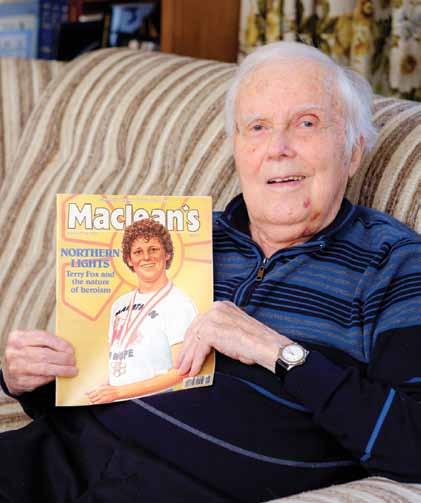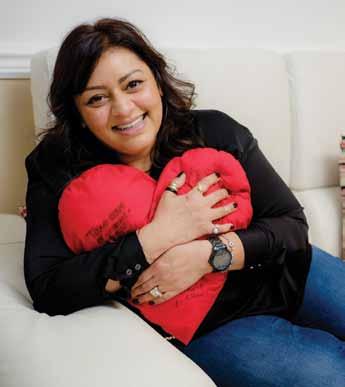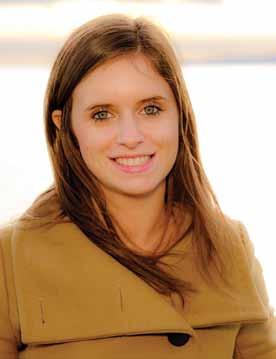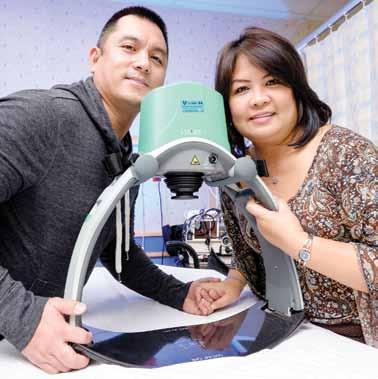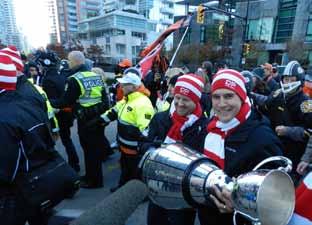
4 minute read
Spinal recovery
Royal Columbian neurosurgeons help heal this link between body and brain SPINAL RECOVERY
Being active is a big part of Susi Kerr’s life. The Tsawwassen resident is a personal trainer who has her own studio in Vancouver. She ran competitively through high school, university and on the national team. And she and her family have enjoyed waterskiing for many years. But a serious accident on Harrison Lake during a summer getaway put all of that in danger. In the minutes before she underwent spinal surgery at Royal Columbian Hospital, Susi feared she would never walk again. She estimates she might have been going 40 miles an hour as she cut across the lake on a slalom ski during a beautiful August morning. That’s when something went seriously wrong. “My whole ski just slipped out from under me, and I just face planted,” recalls Susi. “I was unconscious when I hit the water, apparently. I came up and thought I had broken my arm.” X-rays taken at Chilliwack General Hospital revealed damage to her spinal column. That’s when Royal Columbian Hospital, the region’s neurosciences centre, became involved. Neurosurgeon Dr. Michael Nikolakis studied the results of imaging tests. “When her head snapped back during her fall, she ripped the disc between the 5th and 6th vertebrae,” describes Dr. Nikolakis. “Those two vertebrae were moving relative to each other, and she pinched her spinal cord at that level.” Need to move The spine is a big part of the neurosurgical work that is being performed at Royal Columbian Hospital. “We’re trying to preserve and restore neurological function in patients that have impairments of their spinal cord and nerve roots,” explains Dr. Nikolakis. In Susi’s case, surgery would be needed soon to prevent the injury from getting worse. Without quick intervention, she risked never being able to walk again. For Susi, whose career and personal
Leanne Cassap holds the halo brace she wore for more than four months after fracturing her spine.
life revolved around being active, the reality of her injury was startling. “I started crying,” she says. “I have to be able to move. Dr. Nikolakis just held my hand and said ‘I’ll treat you like my mother and my sister.’” During surgery, Dr. Nikolakis removed the fractured disc between the C5 and C6 vertebrae and put in a spacer and a titanium plate. “By removing the piece of disc, decompressing the spinal cord and then Susi Ker R returned to her jogging routine weeks after undergoing spinal surgery at Royal Columbian Hospital.

stabilizing those two vertebrae, we allowed her spinal cord the optimal environment to recover,” says the neurosurgeon. As she awoke following surgery, Susi’s thoughts quickly turned to her recovery, pushing herself to walk further each day. During week six, she remarkably went jogging for eight kilometers.

Halo prescribed While surgery was critical to Susi’s recovery, it’s not always the course of action for patients who are rushed to Royal Columbian with spinal fractures. Cloverdale resident Leanne Cassap suffered multiple level fractures when the car in which she was a passenger rolled over.
Neurosurgeon Dr. Richard Chan
says Leanne’s injuries included the C2, C3, C6 and C7 vertebrae, but it could have been worse. “She is lucky she
didn’t have any spinal cord injury. Just a bone injury.
She didn’t injure the nerve and didn’t injure the spinal cord.” Among Leanne’s injuries is one with a macabre
sounding name – a hangman’s fracture. Had the impact of the accident been more severe, this fracture would have crushed her spinal cord. “Lucky for Leanne, it didn’t cut into the spinal cord,” says Dr. Chan. Instead of surgery, Dr. Chan prescribed a halo brace, something Leanne wore for more than four months as she healed. “I was worried that I was going to scare all the kids in the neighbourhood,” jokes Leanne. “Nobody is used to having this big contraption on you.” In the past, Dr. Chan says a halo meant having to put screws into the skull to keep it stabilized. But in the last few years, that’s no longer necessary. He says it’s now done noninvasively. “The non-invasive halo is light plastic, about five pounds. A lot easier,” says Dr. Chan. A couple of months after her halo was removed, Leanne’s recovery is still progressing. “I am rehabbing the neck and the shoulder. I do physiotherapy, massage and kinesiology each twice a week.” Dr. Nikolakis says much has changed in the last 10-15 years, and what used to be inoperable is now readily treatable. “It’s allowed patients that would have lived with severe impairment for the remainder of their lives to see improvement of their pain, improvement of their function, improvement of their quality of life, and integration back into society,” says Dr. Nikolakis. Susi Kerr damaged her spine when she fell while water skiing in August 2014.

